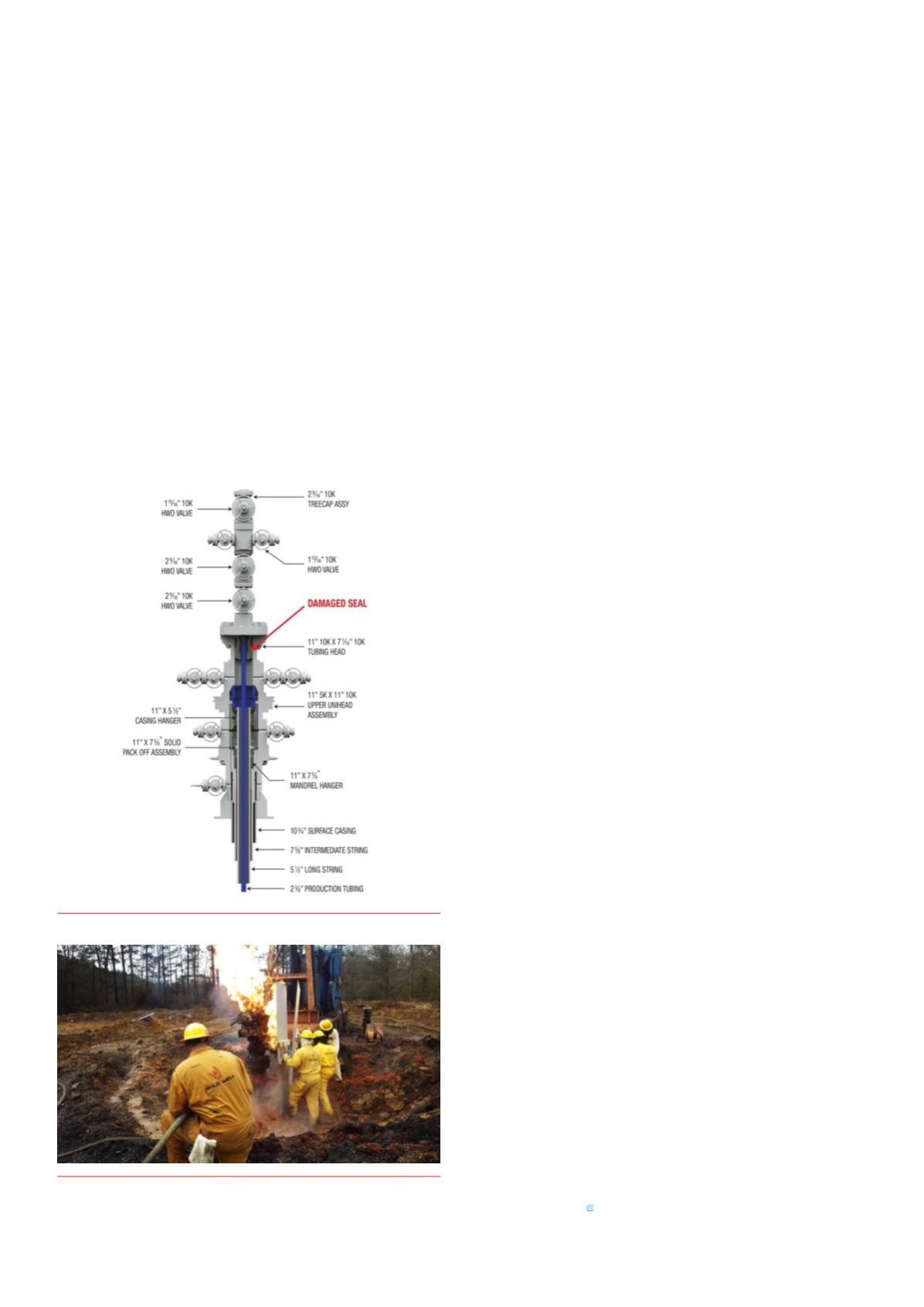
36 |
Oilfield Technology
May/June 2020
The wellhead, casing, and valves were then examined for
damage. With no apparent structural damage, Wild Well then
delivered the well back to the operating company to continue the
removal of tubing and installation of the new production system.
Whatwentwrong?
Often, when root cause analysis of an out of control well is
performed, humans focus on functional causes: faulty equipment,
improper procedure or human factors. Perception bias, in the
absence of critical thinking, plays a key role in out of control events,
as demonstrated in the case study. In this example, an initial review
determined that the crew did everything correctly, or at least the way
things have always been done in that field. Hundreds of similar wells
had been killed in the same manner without an incident. So what
went wrong with this well?
The operating company and the crew perceived an older pressure
depleted well. Confirmation bias encouraged the belief that a simple
reverse circulation would do the job because this had worked many
times before. The perception was that the reverse circulation could
be accomplished with an inoperable casing gauge by simply using
the pump gauge – another example of confirmation bias. They
perceived they did not need an operable gauge. A third instance of
confirmation bias based upon perception was that all hydrocarbons
had been removed from the well, since kill fluid had returned to the
surface, although the barrels pumped were 13 shy of the calculated
133 needed.
Howtomitigateor removethehazard
Older wells can accumulate methane gas, collecting it in various
‘traps.’ Confirmation bias created a situation where humans took
shortcuts to improve work efficiency because this had always
worked before. Reverse circulation is normally faster than forward
circulation. To save time, the engineers and management directed
the crew to perform the reverse circulation, with neither of the three
groups realising the risks involved. A forward circulation would have
removed the hazard.
The second example of confirmation bias was that the job
could be done efficiently without taking time to fix a piece of
faulty equipment. The inoperable casing gauge should have been
replaced with a working gauge. The data gathered from the working
gauge would have allowed the crew to properly analyse what
was happening.
If the gauge had been replaced, the crew would have seen that
even though the post-kill SITP recorded zero pressure, the SICP
would have shown pressure above zero. This data would have
shown that there was a difference in hydrostatic pressure between
the annulus and the tubing. If kill fluid had truly been circulated
completely throughout the well, the same fluid would be inside the
tubing as outside the tubing and the gauges would have read the
same number. Differences between the two gauges indicate either
another circulation has to be performed to remove all hydrocarbons
or the type of circulation has to be changed to properly kill the well.
The crew perceived that all hydrocarbons had been removed
from the well, since kill fluid returned to the surface via the tubing.
The difference between the 133 calculated bbl vs the 120 actual bbl
pumped is crucial information in this example. If calculations were
accurate and kill fluid returned to surface at 120 bbl, something had
to be taking up the 13 bbl of additional annular space: either oil or
gas. Though there are other reasons kill fluid could return early, in
this case it was gas which migrated to the surface as the BPV was
being installed. Working from perception without thinking about
why a phenomenon is being observed can result in disaster. Teaching
crews to think about an operation instead of simply doing the job
greatly reduces the possibility of out of control wells.
Theremedy
In this case study, taking the time to think about the well, repair
faulty equipment and understand how to read gauges in relation to
well control would have prevented the event. With this operation, the
solution would have been for the crew to forward circulate the well
to be certain that all the gas was removed from the annulus before
removing the production tree.
If perception is the way humans see and interpret phenomenon
in their environment and essentially how they live their lives,
upstream petroleum workers need to be aware of the risks of relying
simply upon perception and its biases to make decisions. Perception
without critical thought can often get workers into trouble.
Thus, workers need to first be properly trained in well control
that is specific to their operations. Second, crews should be taught
about and learn how to avoid the confirmation bias of doing what has
always been previously done. Third, both office personnel and field
crews need to learn to critically think about the specifics of a current
operation. Simply put, everyone needs to be trained and encouraged
to stop and think.
Figure 2.
Well control specialists inspect blowout well to prepare for well
kill operations.
Figure 1.
Production treewith amechanical failure.








